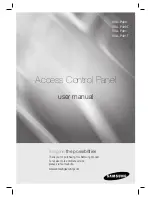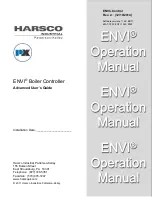Chapter 16 Internal Static RAM (SRAM)
MPC5602P Microcontroller Reference Manual, Rev. 4
Freescale Semiconductor
305
16.5.2
Reset effects on SRAM accesses
Asynchronous reset will possibly corrupt RAM if it asserts during a read or write operation to SRAM. The
completion of that access depends on the cycle at which the reset occurs. If no access is occurring when
reset occurs, RAM corruption does not happen.
Instead synchronous reset (SW reset) should be used in controlled function (without RAM accesses) in
case initialization procedure is needed without RAM initialization.
16.6
Functional description
ECC checks are performed during the read portion of an SRAM ECC read/write (R/W) operation, and
ECC calculations are performed during the write portion of a R/W operation. Because the ECC bits can
contain random data after the device is powered on, the SRAM must be initialized by executing 32-bit
write operations prior any read accesses. This is also true for implicit read accesses caused by any write
accesses smaller than 32 bits as discussed in
Section 16.5, “SRAM ECC mechanism
16.7
Initialization and application information
To use the SRAM, the ECC must check all bits that require initialization after power on. All writes must
specify an even number of registers performed on 32-bit word-aligned boundaries. If the write is not the
entire 32-bits (8 or 16 bits), a read/modify/write operation is generated that checks the ECC value upon
the read. Refer to
Section 16.5, “SRAM ECC mechanism
.
NOTE
You
must
initialize SRAM, even if the application does not use ECC
reporting.
Write
8 or 16-bit write
Idle
1
Read
Pipelined 8- or 16-bit write
2
32-bit write
8 or 16-bit write
0
(write to the same address)
Pipelined 8, 16 or 32-bit write
8 , 16 or 32-bit write
0
32-bit write
Idle
0
32-bit write
Read
Table 16-3. Number of wait states required for SRAM operations (continued)
Operation type
Current operation
Previous operation
Number of wait states required


















